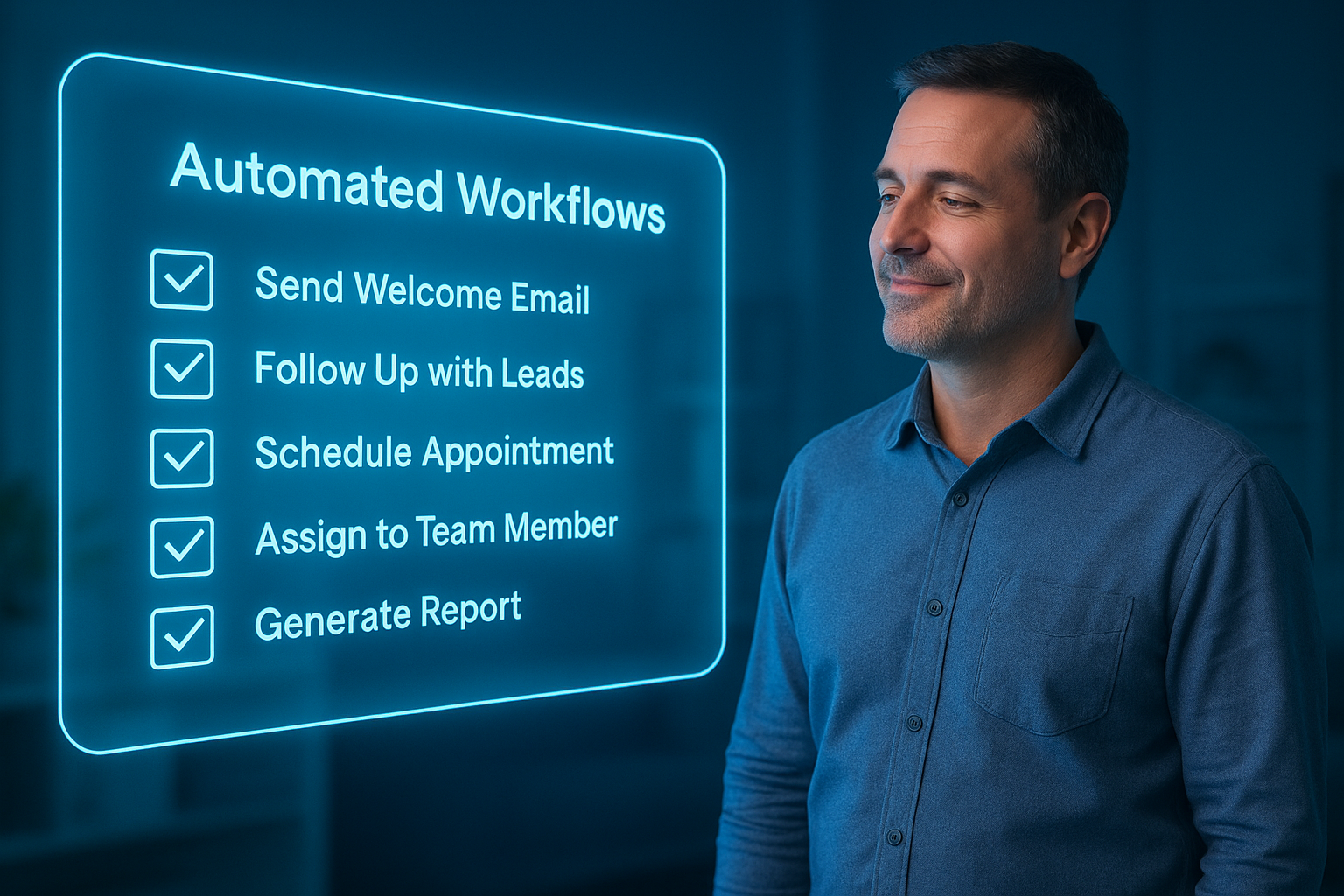How Workflow Mapping Transforms Business Growth
Stop guessing and start growing—why strategic workflows are the backbone of scalable success.

Let’s be honest—if your business feels like it’s being held together by duct tape and a prayer, you’re not alone. Most business owners start with passion, grit, and a lot of figuring-it-out-on-the-fly. That’s normal in the beginning. But if you’re serious about scaling, that wing-it mentality will only get you so far.
Eventually, you hit a wall. Things fall through the cracks. Clients start slipping through your fingers. Your team asks you the same questions over and over. And you find yourself thinking, "There has to be a better way."
There is. And it starts with your workflows.
What Workflow Mapping Really Means (And Why It Matters)
Workflow mapping isn’t some corporate buzzword—it’s the backbone of how smart businesses grow without burning out. It’s about clearly laying out the step-by-step process of how your business actually runs.
Think of it like GPS for your business. Instead of hoping everyone just knows what to do, workflow maps show them where to go, what happens next, and how to get there efficiently.
And here's the kicker: when your workflows are unclear, your growth is built on guesswork. That’s not a strategy—that’s a gamble.
Step One: Map It Out (Yes, Literally)
Start with your client journey. From lead to delivery, what are the steps?
Grab a whiteboard, notebook, or digital tool (Notion, GHL, Lucidchart—whatever works for you). Break it down like this:
- How do leads find you?
- What happens once they inquire?
- How are proposals, contracts, or invoices sent?
- What does fulfillment or delivery actually look like?
- How do you stay in touch afterward?
This isn’t about perfection—it’s about visibility. Once it’s mapped out, you can finally see where the process is smooth… and where it’s a hot mess.
Step Two: Find the Bottlenecks
Here’s where most people stop—but this is where the magic happens.
Now that you have your map, look for the slowdowns:
- Are you the bottleneck because you’re the only one who knows what’s going on?
- Are tasks sitting in inboxes waiting for approval?
- Do clients get confused about next steps or ghost you after signing up?
These aren’t just small annoyances—they’re profit leaks. Every delay, every misstep, every “we’ll circle back” moment is costing you time, energy, and money.
Step Three: Standardize What’s Repeatable
If something works, document it. Better yet—turn it into a repeatable process your team (or future hires) can follow.
Examples:
- Create email templates for lead follow-up
- Build onboarding sequences in your CRM
- Use checklists to ensure consistency in service delivery
This isn’t about removing your personal touch. It’s about making sure every client gets a consistent, high-quality experience—even when you’re not involved in every single step.
Step Four: Automate Where You Can
This is where workflows turn from helpful to powerful.
- Use automation to send reminders, follow-ups, or updates
- Trigger tasks or emails based on client actions
- Create pipelines that show exactly where every lead or project stands
You don’t need to automate everything, but anything that repeats more than twice? It's probably worth systemizing.
Final Thoughts: Clarity Creates Confidence
When your workflows are mapped, optimized, and streamlined, everything changes.
- You feel more in control
- Your team knows what to do without asking
- Clients move through your process seamlessly
- And most importantly—you free up your time to actually grow the business
Because here’s the truth: the best businesses don’t grow by chance. They grow by design.
If you’re tired of relying on guesswork and gut instincts to keep things running, it’s time to build something better. And it starts with getting your workflows out of your head and into a system.
Grab the Business Growth Blueprint to start streamlining your systems and setting your business up for effortless scaling.
More Marketing Tips, Tricks & Tools










